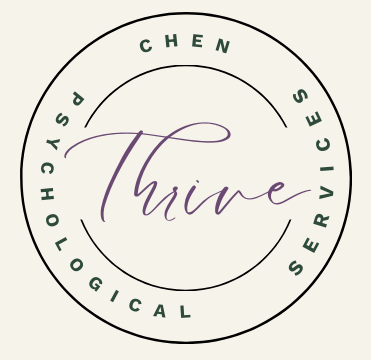Hidden Struggles of Communication Styles in the Workplace
Introduction
For Asian American women, communication styles in the workplace can feel confusing. For example, have you ever received the feedback, “You need to speak up more” or “You need to advocate for yourself”? At first glance, this advice may seem simple, even helpful. But for many Asian American women, it lands more like a contradiction than constructive guidance. You might nod politely while feeling a wave of discomfort, self-doubt, or even guilt rise up inside.
Speaking assertively may not just feel awkward; it can feel wrong. If you were raised to value humility, emotional restraint, and respect for authority, the idea of confidently disagreeing with your boss or taking up space in a meeting might not only feel foreign, but like a betrayal of deeply ingrained values. At the same time, staying quiet, deferring to others, or choosing your words carefully can be misunderstood as lacking confidence or leadership potential.
You’re navigating a tightrope of competing expectations: be assertive, but not too bold; respectful, but not passive; humble, but not invisible. The tension between your collectivist cultural upbringing and a dominant U.S. workplace culture that rewards self-promotion and directness can be emotionally exhausting and leave you wondering if you truly belong.
In this post, we’ll explore:
Why cultural upbringing shapes workplace communication
How Asian cultural values clash with Westernized workplace communication
What communication styles in the workplace really mean
How to begin bridging the gap with confidence and self-compassion
What We Mean By “Communication Styles in the Workplace”
When we talk about communication styles in the workplace, we’re often referring to culturally shaped ways of expressing ourselves—verbally and nonverbally—in professional settings. According to anthropologist Edward Hall’s context theory (Hall, 1976; Afrouzi, 2021), cultures fall along a continuum from high-context to low-context communication.
High-context cultures rely heavily on nonverbal cues, shared assumptions, interpersonal sensitivity, and indirect forms of expression. Meaning isn’t spelled out; it’s inferred. Silence can be just as meaningful as speech. In contrast, low-context cultures emphasize directness, clarity, and explicit communication. What you say is what you mean, and messages are expected to be self-contained, with little room for ambiguity.
Asian cultures tend to be high-context, while Western cultures skew low-context. This has major implications for how communication styles in the workplace are understood, expected, and rewarded.
Many U.S. professional settings prize low-context norms like assertiveness, clarity, direct feedback, and verbal participation. These traits are often viewed as indicators of confidence, competence, and leadership potential. But for Asian Americans raised in high-context homes, these same behaviors may feel unfamiliar, uncomfortable, or even inappropriate.
If this resonates, feel free to reach out for a brief consultation see whether my skills-based approach fits your goals.
Cultural Roots of Communication Style
Much of this disconnect stems from deeper cultural values. Broadly speaking, Western cultures tend to emphasize individualism, or the importance of personal achievement, autonomy, and independence. In contrast, Eastern cultures prioritize collectivism, which centers the needs of the group, preserving harmony, and showing respect through deference and emotional control.
Within collectivist frameworks, communication is often more nuanced. Rather than confronting issues head-on, problems are managed indirectly to preserve relationships and avoid embarrassment (Ni, 2022). Speaking less isn’t seen as weakness; it’s often considered a sign of wisdom, thoughtfulness, or maturity.
For Asian and Asian American individuals raised in such environments, these values influence everything from how they give and receive feedback to how they approach conflict or express their needs (Cher, 2022; Park & Kim, 2008). It’s common to:
Avoid interrupting or dominating conversations
Rely on context, tone, and subtle cues over blunt speech
Provide feedback in a way that’s open to interpretation rather than confrontational
Refrain from self-promotion in favor of team success
Show deference to authority, even when privately disagreeing
Contrast that with typical Western workplace expectations: direct communication, data-driven decisions, open disagreement in meetings, and a focus on clearly articulating one's contributions (Glassdoor, 2021). The clash in communication styles in the workplace is more than just a difference in preferences. It’s a difference in worldviews.
Why the Disconnect Feels So Personal and So Draining
This cultural gap doesn’t just affect how others perceive you—it affects how you perceive yourself. Cross-cultural research shows that people from high-context cultures (including many Asian Americans) are less likely to speak up in group settings, particularly if not explicitly invited to do so by someone in authority (Park & Kim, 2008; Ward et al., 2016).
If you’re Asian American, especially second-generation, you might feel torn between two internal scripts. One part of you says, “Don’t rock the boat. Stay humble. Let your work speak for itself.” Another part knows that staying quiet might hold you back—but worries that speaking up will feel forced, or come off as arrogant, aggressive, or inauthentic.
Thoughts like:
“If I say too much, I’ll be seen as difficult. But if I say nothing, I’ll seem weak.”
“I’m too quiet to be taken seriously, but too outspoken to feel like myself.”
This tug-of-war can become exhausting. Over time, it often leads to self-doubt, overthinking, and perfectionism. You may start replaying conversations in your head, scrutinizing how you came across, and internalizing feedback as a reflection of your worth. These patterns can contribute to emotional burnout and anxiety, especially when layered with the pressure to succeed in environments that weren’t designed with your cultural context in mind.
When “Professionalism” is Coded
It’s worth noting that what’s considered “professional” is not neutral. It’s often shaped by white, Western norms. Traits like being outspoken, confident, or assertive are praised, while traits associated with emotional attunement, humility, or indirect communication may be misunderstood or undervalued.
As a result, Asian American women may face a double bind: penalized for being “too quiet,” yet judged or dismissed when they speak up. The same behaviors that are praised in others can be questioned when coming from someone who doesn’t fit the dominant mold. This dynamic has contributed to systemic patterns like the bamboo ceiling and sticky floor, terms that describe the barriers many Asian Americans face when trying to rise into leadership roles (Villarica, 2012).
It’s not that Asian American women lack communication skills. It’s that their style often isn’t recognized as leadership material in a system that rewards only one way of showing up.
Bridging the Gap Without Losing Yourself
So, how do you expand your range of expression without compromising your values or feeling like you’re putting on a performance?
First, recognize that this isn’t about abandoning who you are. It’s about building flexibility, adding tools to your communication toolkit so you can choose what feels most authentic and effective in different situations.
Here are a few strategies, drawn from research and practical experience (Glassdoor, 2021):
Use bridge phrases like “I’d like to offer a different perspective” or “One thing to consider might be…” These help you express ideas without sounding combative.
Try subtle assertiveness, using openers like “May I add…” or “Can I share a quick thought…” to ease into the conversation.
Prepare talking points in advance if speaking off the cuff feels stressful. Rehearsing key messages helps boost confidence.
Acknowledge discomfort, but don’t let it be a stop sign. Growth often feels awkward at first—and that’s okay.Reframe speaking up not as self-promotion, but as service: your ideas and contributions help the team succeed.
Remember: adapting to different communication styles in the workplace doesn’t mean you’re faking it. It means you’re choosing to grow in ways that expand your range, not erase your roots.
You’re Not Alone, And You’re Not Doing It Wrong
If you’ve felt confused, stuck, or emotionally drained navigating communication styles in the workplace, you’re far from alone. Many second-generation Asian American women share these struggles. The misalignment between cultural values and workplace expectations can create inner tension that’s hard to name, let alone resolve. And too often, this disconnect is misread as a “confidence problem” or a lack of leadership potential.
But, there’s nothing wrong with you. You’ve simply been operating within a system that doesn’t always see your strengths. And it’s entirely possible to honor your cultural background while also developing new ways to express yourself with authenticity and power.
Therapy can be a helpful space to:
Explore and define your authentic voice
Understand how cultural narratives shape your inner dialogue
Build assertive communication rooted in your values
Learn to set boundaries without guilt
Untangle the anxiety and perfectionism that often stem from trying to meet conflicting expectations
Final Thoughts
The way we communicate isn’t just about words—it’s about identity, values, and belonging. If you've ever felt like your natural style doesn't “fit” at work, know this: you’re not broken. You're bicultural. And with the right tools and support, you can learn to navigate both worlds with greater confidence, without leaving any part of yourself behind.
If you’re based in NYC and looking for support, I invite you to reach out and book a free consultation. I’m Dr. Angela Chen, and I specialize in helping high-achieving Asian American professionals navigate these exact challenges with compassion and clarity.







